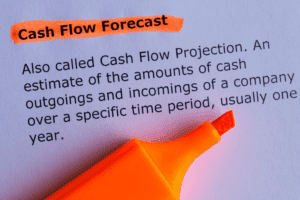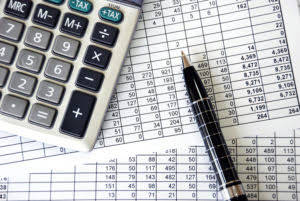It’s more alarming when an established company that’s had years to accumulate earnings shows a retained earnings deficit. Any investors—if the new company has them—will likely expect the company to spend years focusing the bulk of its efforts on growing and expanding. There’s less pressure to provide dividend income to investors because they know the business is still getting established. If a young company like this can afford to distribute dividends, investors will be pleasantly surprised. If a company issued dividends one year, then cuts them next year to boost retained earnings, that could make it harder to attract investors. Increasing dividends, at the expense of retained earnings, could help bring in new investors.
What is the retained earnings formula?
Both revenue and retained earnings are important in evaluating a company’s financial health, but they highlight different aspects of the financial picture. Revenue sits at the top of the income statement and is often referred to as the top-line number when describing a company’s financial performance. Retained Earnings (RE) are the accumulated portion of a business’s profits that are not distributed as dividends to shareholders but instead are reserved for reinvestment back into the business.
Balance Sheet Equity
We’ve talked pretty openly about the regulatory lag that we’re seeing given the historical test year construct that we’re living under. And so we are in that period right now where there is that drift around our ability to earn close to our actual ROE, while we haven’t disclosed a specific number. And then secondly for me, going back to the regulatory lag, your EPS guidance forecast through ’26, presumably isn’t accounting for any changes in the regulatory docket in terms of test years Navigating Financial Growth: Leveraging Bookkeeping and Accounting Services for Startups or formula rates. Just wondering, if there’s anything you could share about the earned ROE on the ACC rate base that you are assuming in guidance this year and then over the course of ’25 and ’26 presumably it will be somewhat lumpy. Over the next couple of years we’ll continue to do the different markets available to us to meet that need. The base case tends to be something like an ATM because that matches up well to deploying capital and then investing the proceeds into the utility.
Retained earnings, shareholders’ equity, and working capital
In the first line, provide the name of the company (Company A in this case). Finally, provide the year for which such a statement is being prepared in the third line (For the Year Ended 2019 in this case). Retained earnings can be used to pay off existing outstanding debts or loans that your business owes. We’ll pair you with a bookkeeper to calculate your retained earnings for you so you’ll always be able to see where you’re at.
- While hundreds of publicly traded companies report losses quarter after quarter, a handful may go on to attain great success and become household names.
- Retained earnings are essentially the cumulative profits a company has earned over its history that have not been distributed as dividends.
- It also indicates that a company has more funds to reinvest back into the future growth of the business.
- The segment margin was 3.2% versus a negative 0.4% in the year-ago period.
- As a result, any items that drive net income higher or push it lower will ultimately affect retained earnings.
Zacks’ 7 BestStrong Buy Stocks for May, 2024
- In rare cases, it can also indicate that a business was able to borrow funds and then distribute these funds to stockholders as dividends; however, this action is usually prohibited by a lender’s loan covenants.
- But while the first scenario is a cause for concern, a negative balance could also result from an aggressive dividend payout, such as a dividend recapitalization in a leveraged buyout (LBO).
- In other cases, companies may post negative earnings (or losses) if they are spending more than they did in the past.
- For an analyst, the absolute figure of retained earnings during a particular quarter or year may not provide any meaningful insight.
- One of those figures is called retained earnings if in the black or negative retained earnings if in the red.
- If a company issued dividends one year, then cuts them next year to boost retained earnings, that could make it harder to attract investors.
Since stock dividends are dividends given in the form of shares in place of cash, these lead to an increased number of shares outstanding for the company. That is, each shareholder now holds an additional number of shares of the company. As stated earlier, retained earnings at the beginning of the period are actually the previous year’s retained earnings.
So we’re comfortable with the ramps of these customers, the capacity that they’re asking for in the near term. It’s really that longer-term 2025 when TSMC’s first phase goes full production and then into the out years of the plan when Fab 2 and Fab 3 to full production where some of that manufacturing growth really takes over the plan. In the near term, because Taiwan semiconductor is such a large component of our sales growth, and as you said, the diverse set of industrial and manufacturing customers that were having come in. Their ramp really continues throughout this year until they reach full production next year.
- There’s certainly more demand out there on both sides than is represented in that IRP.
- When investing in negative earnings companies, a portfolio approach is highly recommended, since the success of even one company in the portfolio can be enough to offset the failure of a few other holdings.
- The backlog at the quarter-end was $4.39 billion, down from $5.24 billion a year ago.The Other segment, which comprises NuScale, generated revenues of $222 million for the quarter, down 21.6% from the year-ago period.
- It’s a measure of the resources your small business has at its disposal to fund day-to-day operations.
- When a company consistently experiences net losses, those losses deplete its retained earnings.
Factors such as an increase or decrease in net income and incurrence of net loss will pave the way to either business profitability or deficit. The Retained Earnings account can be negative due to large, cumulative net losses. The company said it was expecting a sequential increase in the growth rate in retail units in the second quarter and reported a record first-quarter profit of $49 million after posting a $286 million loss a year ago. The quarter’s adjusted earnings before interest, taxes, depreciation, and amortization (EBITDA) of $235 million and revenue of $3.06 billion were also record highs. I would just say that if you look at our sales growth even for the quarter, we continue to see that 1.5% customer growth.
Retained earnings appear on the balance sheet under the shareholders’ equity section. However, they are calculated by adding the current year’s net profit/loss (as appearing in the current year’s income statement) and subtracting cash and stock dividends from the beginning period retained earnings balance. Shareholders’ equity represents a company’s net worth (also called book value) and is a gauge of a company’s financial health.
Your business’s balance sheet is filled with figures that spell out your business’s financial health. It may be tempting to keep things simple with a final profit or loss amount, but each line item helps you understand how and why your business is making or losing money. One of those figures is called retained earnings if in the black or https://centraltribune.com/navigating-financial-growth-leveraging-bookkeeping-and-accounting-services-for-startups/ if in the red. Here, we’ll focus on what negative retained earnings mean and what they indicate for the success of your business. In financial modeling, it’s necessary to have a separate schedule for modeling retained earnings.


